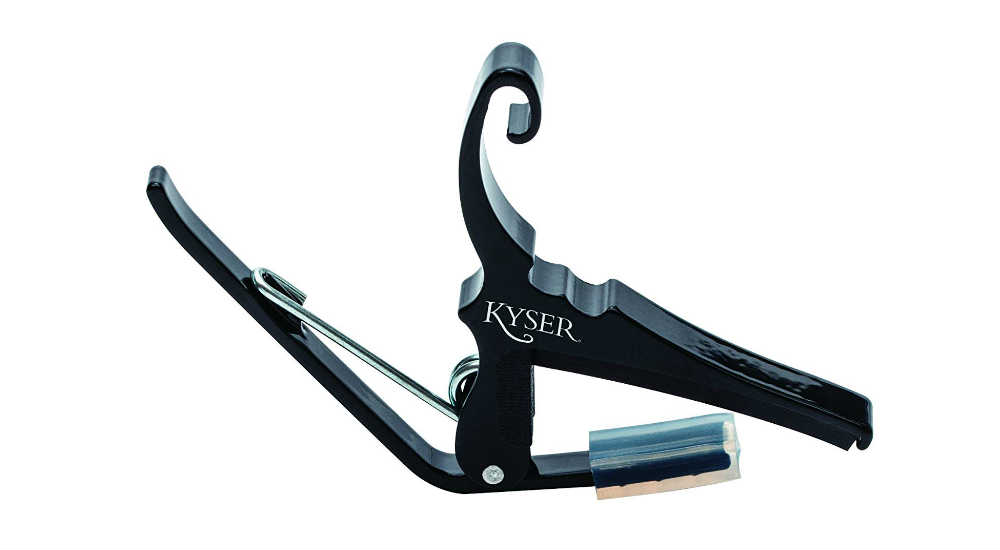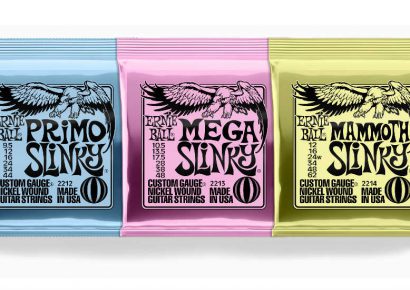In 1974, the Kyser Quick-Change capo was born. The synthesiser hadn’t quite impacted popular music, The Ramones had just formed and hip-hop was a kernel of an idea in the boroughs of New York. Music has changed a lot over the last four decades but the capo has not. The Quick-Change has been consistently popular over that time because it does precisely what its name states; offering a quick and easy way to change the tuning of your guitar without actually retuning.
The E (Electric) capo for six string electric guitars is the most similar to the original design, with only minor tinkering. The Quick-Change you’ll be playing in Australia this month has a slightly smaller body and less spring tension than the ‘74 original, accounting for the prevalence of lower action guitars. It’s as easy to use as ever, allowing for swift changes without fuss. Whenever you’re not using the Quick-Change it sits neatly on the headstock of your guitar – mine sits permanently on a Gretsch semi-hollow body. Although this model is designed specifically for electrics, there is little difference between this and the acoustic version.
The Low Tension Capo is the most significant update to the Kyser Quick-Change model since its inception; to use a tired gear maxim, it’s less reinventing the wheel and more offering new treads. The LT has 25% less tension in its spring than its big brother, and is considerably smaller. It also arrives in only matte black, driving home its sleek modus operandi. Used on both a Gretsch semi-hollow and a Les Paul, it was even quicker to manoeuver up and down the fretboard by virtue of its size. Happily, the lower tension also meant the capo didn’t force my strings out of tune as quick. Overall, I’d be more inclined to purchase an LT next time I’m forced to go capo shopping though there is little point in owning both the LT and the E.
The BMU (Banjo, Mandolin and Ukulele) capo shows off one side of Kyser’s purpose-built ranges. It’s far smaller than the other two, fitting the necks of the sometimes maligned instruments. The BMU capo functions with the same Kyser Quick-Change spring you know and love on a miniature scale, making it a cute little accessory. Using a capo on an instrument as small as the ukulele does feel somewhat pointless, though it provides plenty of bizarre tonality when applied to the mandolin.
Overall, Kyser’s build quality across its capo range is impeccably sturdy. It’s a tried and true manufacturing recipe that is impossible to discredit. This is less a review and more a celebration of what guitarists should already know; the Kyser capo is here to stay.

